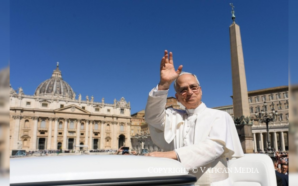14 September is the east of the Exaltation of the Holy Cross
The Feast of the Exaltation of the Cross had its beginnings in Jerusalem. But what it celebrates is universal and takes us into the heart of God. It invites us to reflect on the central importance of Jesus’ crucifixion in Christian faith. It reminds us that Jesus loved us enough to die a painful and dehumanising death in being faithful to the mission that God had given him. He embodied God’s love for human beings. The cross celebrates Jesus’ triumph of life over death in rising from the dead. It also marks the promise that we shall share in his life with God. The feast of the Cross is really a feast of God’s love for us shown in Jesus’ life. The Cross itself is a symbol of the life that is more powerful than pain and death.
The feast, too, takes us back to Jerusalem. Jesus visited it at a time when the Romans had taken control of Israel in the face of popular antipathy to their rule. A Roman official ordered Jesus’ crucifixion. Shortly after Jesus’ death, and again in the following century, Jewish rebels took over Jerusalem. The Roman troops laid siege to the city, destroyed the Temple, and killed and exiled the Jewish people who had lived there. Palestine became a provincial Roman town.
In 312, however, the Emperor Constantine legalised Christian faith and worship. As result, Jerusalem became a place of pilgrimage for Christians. One of the earliest and most significant visitors was Constantine’s wife, Helena. She came in 326 CE and was concerned to identify the places where Jesus had visited and where he had died. According to some stories, she helped discover three crosses. The Bishop of Jerusalem affirmed that one was indeed the cross on which Jesus had died indeed traced back to Jesus.
Constantine then had a Basilica built on the site. After it was completed, it was blessed in 335. As part of the ceremony, the wood of the cross was brought in to be reverenced. Pieces of wood from the Cross were distributed through the Church both for prayer and for the healing that God was believed to work through relics.
On this date of the year, the Feast of the Finding of the Cross was later celebrated. Centuries later, Palestine became a place of conflict between the Roman and the Persian Empires. Early in the seventh century, the Persian forces captured Jerusalem and took possession of the Cross. After the Roman Empire recaptured the city in 630, the Cross was recovered and once again given its place of honour in the Church. That event, too, generated the feast later known as the Exaltation of the Cross.
Last century, Pope St John XXIII brought together the feasts in the liturgy of the Western Catholic Church into a single celebration of the Exaltation of the Cross on September 14 each year.
Fr Andrew Hamilton SJ writes for Jesuit Communications and Jesuit Social Services.








